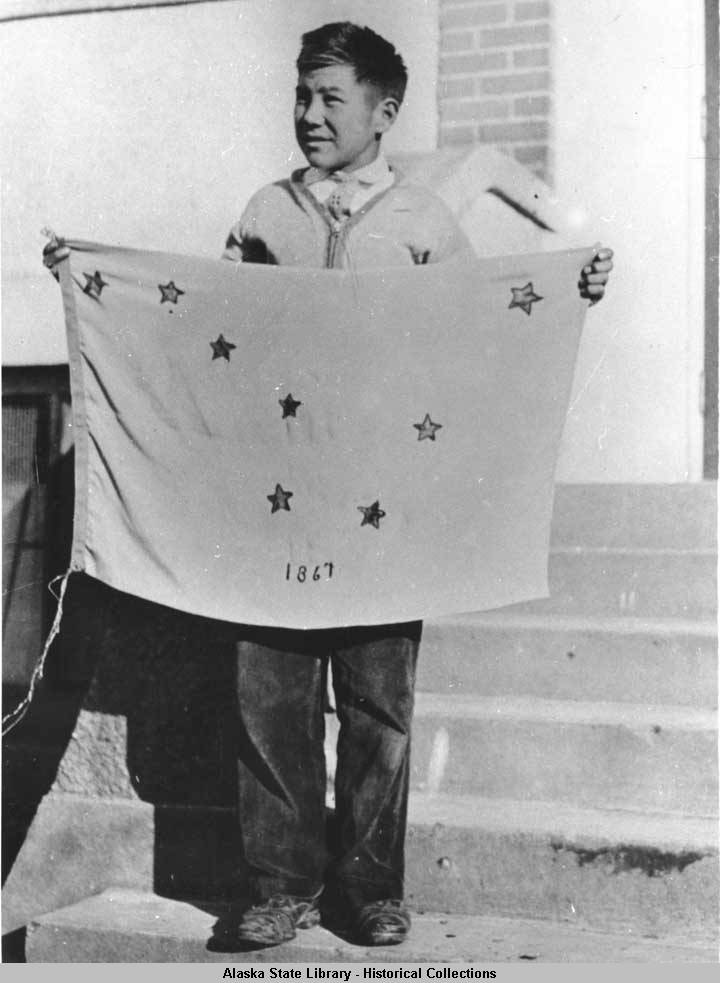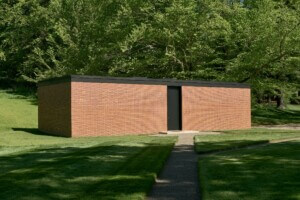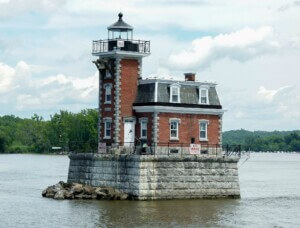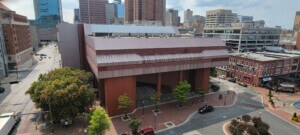Officials in Seward, a small port city of just under 3,000 people perched on the edge of Resurrection Bay on Alaska’s Kenai Peninsula, have voted in favor of demolishing the Jesse Lee Home for Children, a former residential school for displaced children operated by the United Method Church that holds a significant place in the history of the state, even though it has sat in an advanced state of decay for decades.
The Jesse Lee Home is where, in 1927, an Alutiiq seventh-grader named Benny Benson designed, sewed, and flew the first territorial flag for Alaska.
Benson’s winning design, which was later adopted as the state flag, beat out 700 other entries—all of them submitted by Alaskan schoolchildren—as part of an American Legion-sponsored competition. After finishing college, Benson used his $1,000 cash prize from the competition to move to Seattle and enroll in a diesel engine repair school. He later started a family and returned to Alaska to work as an airplane mechanic. Benson died in 1972 at age of 58, 13 years after his design was adopted in 1959, as the official flag for the newly established state of Alaska. His design, which features eight gold stars—seven small and one large—forming the Big Dipper and Polaris, placed fifth in design quality in a 2001 ranking of 72 state, provincial, and territorial flags in the U.S. and Canada by the North American Vexillological Association.
The Associated Press noted that Benson is believed to be the only person of Indigenous descent to design a state flag.
While Benson’s legacy lives on at several prominent Alaskan places that have been named in his honor including an airport (Kodiak), a major street (Anchorage), and even a mountain in the Kenai range, the Jesse Lee Home for Children, which has been abandoned since 1964 after incurring significant damage in a major earthquake, is the place where the Alaska flag was born. With numerous proposals to save and repurpose the dilapidated orphanage/school having been floated over the years but never come to fruition, it will now be razed after Seward City Council passed a resolution this week to proceed with demolition.

Only one council member voted against the resolution, per Anchorage-based NBC affiliate KTUU.
“There’s a lot of history there and people are intrigued with the history of the school,” Trish Neal, president of the Alaska Association for Historic Preservation, said in a statement shared with KTVA. “This is really an important piece of history and it should be saved.”
Built in 1925 with Tacoma, Washington-based Stanley Shaw serving as architect, the long-forsaken site, added to the National Register of Historic Places in 1995, was included on the 2020 edition of the Alaska Association for Historic Preservation’s Ten Most Endangered Historic Properties list. The once-expansive property, including two surviving buildings at the site that weren’t demolished shortly after the 1964 earthquake, was originally deeded to the city of Seward by the United Method Church. It was later passed off to a sequence of private owners before being sold back to its current owner, the city of Seward, in 2019 after a state grant-backed plan spearheaded by the nonprofit Friends of Jesse Home to transform the site (rumored, naturally, to be haunted) into a charter school never materialized. The Jesse Lee Home as an institution survived; it was relocated to Anchorage in 1965 and eventually became the social services organization known as AK Child & Family.
Referring to the property, which is now surrounded by residential subdivisions, as a “big point of contention in a small town” and as “so deteriorated that even the most civic-minded developer turned away,” the Anchorage Daily News aptly described the site, and the circumstances surrounding it, in 2012:
“Sitting on a hill overlooking Resurrection Bay is a grand, hulking building, an abandoned orphanage with dark, empty windows. It’s creepy on the kind of grand scale that wouldn’t look out of place on a movie set, but this is no Hollywood haunted house. It is, of course, the old Jesse Lee Home.
“To some, the Jesse Lee Home is a historic gem—one of few structural landmarks in our young state and a cradle of equal rights in Alaska. To others, it’s an asbestos-filled blight just waiting to collapse on top of a thrill-seeking teen. But everyone agrees that something should be done.”
At this week’s closely-watched council meeting, Seward Mayor Christy Terry expressed her full support in demolishing the buildings, which she claimed would cost substantially less than restoring it and adapting it for new use. Removing any and all hazardous (or historically significant) materials from the buildings followed by a full demolition would cost between $800,000 and $1.3 million. A state grant would cover up to $1 million. Terry, who called the site a “hazard” that’s “just waiting for someone to get in there and get hurt or killed,” said that saving the blighted property would come equipped with a price tag of $28 million.
“That’s not finishing the inside, that’s not building it up to a certain use,” KTVA reported Terry as saying. “That’s $28 million just to make sure, you know, that building can stay standing.”
In addition to voting in favor of the resolution to demolish the historic building, city council members also voted to erect a memorial of some sort at the site in the future. However, any solid plans—and associated cost—of that endeavor are unknown although additional grant money would likely come into play.
“Seward is being painted in a light that we don’t respect our history,” Terry told the council. “We have the opportunity to preserve the history and the legacy of a very important structure to the Alaska people, but it doesn’t mean that we have to preserve the building.”
The voting followed a public comment period, in which opinions about the fate of the building were reportedly mixed. Many Alaskans made clear that the viewed the old buildings as crumbling eyesores that should be razed despite its role in state history, while others pushed for its preservation and reuse as a museum, school, or lodge.
Even though the existing Jesse Lee Home for Children buildings will now be torn down, these ideas and others will be considered at a future public meeting on how to move forward in redeveloping the site with a memorial in place. At the city council meeting, Terry said she imagined building a memorial pavilion at the site using wood salvaged from the demolition or potentially a new public playground.











